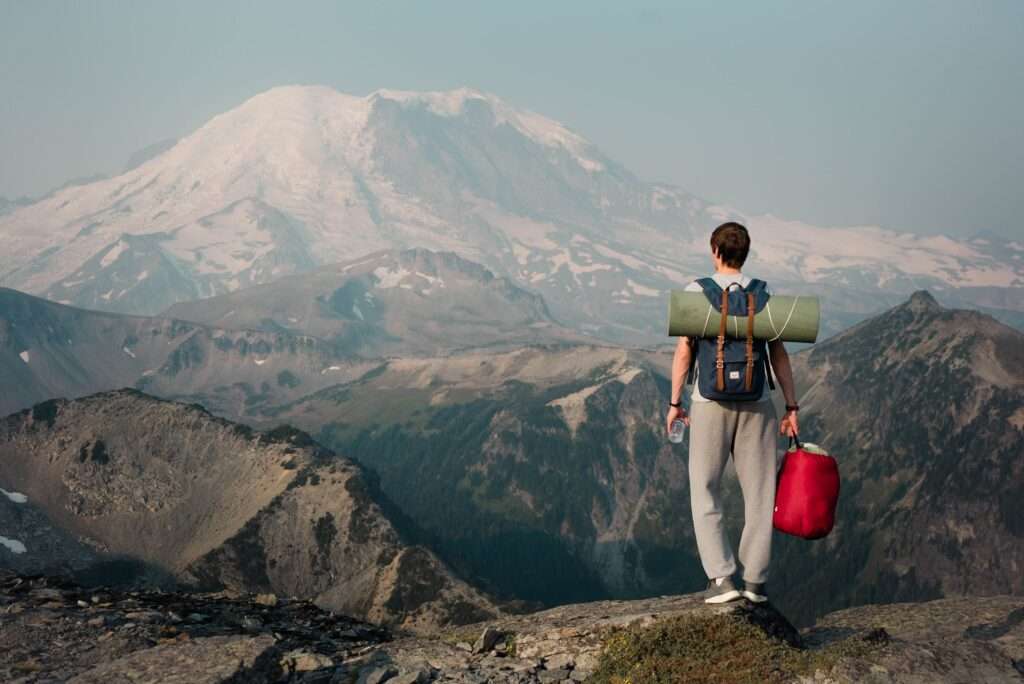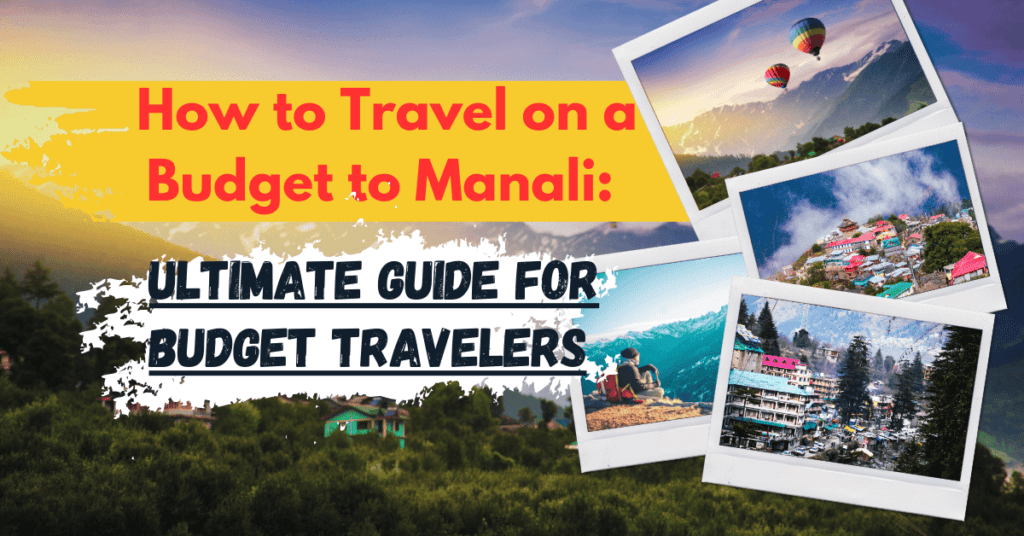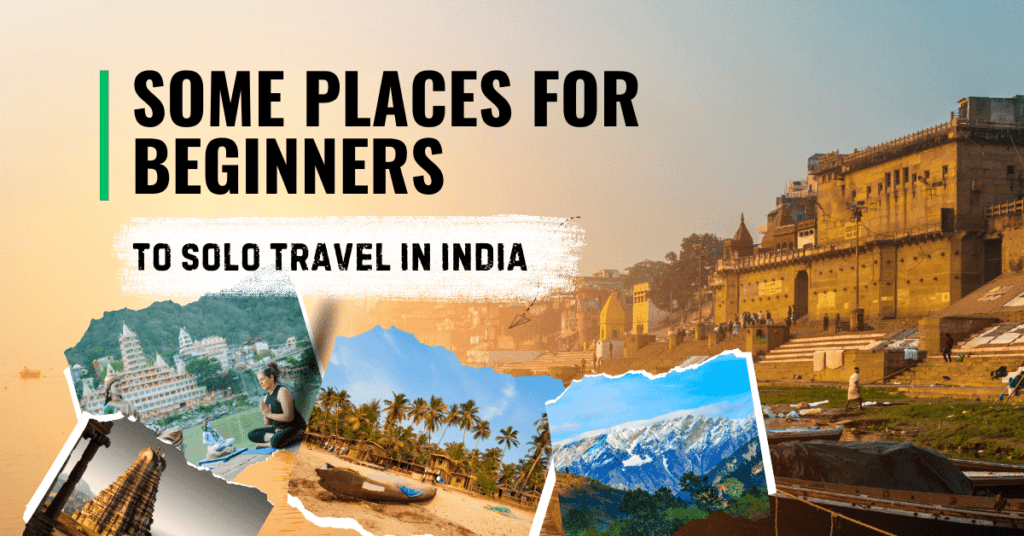
Solo traveling signifies a unique, freeing, and self-reliant mode of exploration, allowing individuals to venture into the wonders of the world unaccompanied, free from the influence or dependency on friends or family. Embarking on journeys solo, both local and distant, one is their own companion, pilot, and decision-maker. As daunting as it might sound to positive humans, solo traveling serves an array of advantages propelling non-public development and introspection.
Benefits of Solo Traveling

Liberty and Self-Direction: Arguably the maximum big gain of traveling on my own is the unlimited liberty it bestows. Your schedule is yours alone to create and comply with, leaving room for edition mainly based on personal tastes without changing for others’ wants. This liberty is a route to spur-of-the-second and meaningful life events.
Self-Realization: Solo adventures present an obvious chance for introspection. The silence leaves room for thinking about over private thoughts and feelings, leading to a deep knowledge of self. It will become a transforming trip, uncovering your strengths, weak spot, and secret predilections.
Confidence Embodiment: Single-handed tour can increase self-assurance on successfully handling new terrains, decision-making, and overcoming hurdles separately. Triumphing over hurdles along the way will develop resiliency and confidence.
Socialization: Contrasting the not unusual belief approximately single travelers being isolated, unmarried journeys commonly come to be enhancing social interaction. Without the safety online of known names, one is keener to hook up with locals and co-travelers, creating strong ties and friendships.
Cultural Immersion: When you travel unmarried-handedly, it helps a deep dive into neighborhood cultures. The open-mindedness will set off you to accept sparkling foods, choose up the nearby lingo, and take part in traditional practices for a more proper tour experience.
Personal Evolution: Solo traveling may be viewed as a bankruptcy in personal improvement and self-enhancement. Confronting and beating hurdles in new settings complements trouble-solving skills and broadens your outlook.
Flexibility: Solo traveling keeps room for spontaneous plan changes. Whether coming upon a much less regarded tourist spot or wanting to increase a stay, there may be no want for agreement; you observe your heart.
Augmenting Self-Reliance: Solo traveling requires self-reliance. It’s a lesson in financial management, transportation guidance, and independent problem-solving, establishing a feel of freedom.
Solace and quiet: Solo trip gives the lots-needed quiet for thought and renewal. It allows for separation from the every day grind and focus on intellectual well-being, recharging the ideas and spirit.
Adventure and Spontaneity: Traveling solo frequently brings out the adventurer inside. Be it walking on a secluded route, starting an unexpected road trip, or playing in an intense game, the power of solo touring gives possibilities for taking chances that would be in any other case ignored.
Choosing Your Destination

Selecting the correct holiday spot in your solo traveling is a key choice which could shape your whole tour enjoy. To ensure a satisfying and fun trip, it is important to carefully keep in mind numerous key factors:
- Interests and Passions: Start your holiday spot search by introspecting your interests and loves. Are you drawn to cultural discovery, outdoor activities, historical sites, or quiet beach escapes? Identifying your tastes will lead you in the direction of a location that connects along with your goals.
- trip Goals: Define your trip goals. Do you looking for interesting adventures, deep self-discovery, quiet relaxation, or a mixture of those elements? Knowing your goals will help you tailor your holiday spot to match with your aims.
- Travel Style: Your favorite travel style performs a vital function in location selection. Are you captivated via colorful cityscapes, intrigued with the aid of faraway towns, or enticed via secret gemstones off the visitor trail? Opt for a holiday spot that harmonizes with your character and comfort sector.
- Season and Weather: Research the temperature and yearly changes in skill areas. Weather situations can greatly effect your tour experience, so pick out a time of year that improves your choices and thoughtful sports.
- Travel Restrictions: Stay informed approximately tour limits, visa needs, and health policies that can apply to your chosen location. Government web sites and genuine trip sources are useful sources of new information.
Safety Considerations:
- Safety Ratings: Prioritize your safety with the aid of checking travel warnings and safety scores for crowded places. Government websites and fellow tourists’ reviews shared on tour boards can offer insights into security problems.
- Local Customs: Cultivate cultural awareness by acquainting yourself with nearby practices and traditions. Respecting and sticking to those rules not most effective improves your safety but additionally strengthens your culture encounters.
- Health Precautions: Safeguard your properly-being via getting to know health-related issues. Stay informed approximately vital vaccines, ability disease risks, and the provision of clinical places in your chosen vacation spot. Packing a core first-useful resource bag is a wise safeguard.
- Emergency Contacts: Prior to leaving, bring together a listing of key emergency contacts, along with neighborhood officials, medical centers, and your usa’s embassy or consulate. Having this data with no trouble ready can be precious in instances of need.
Budget Planning:
- Cost of Living: Gain insights into the value of living at your location. Take under consideration fees inclusive of lodging, meals, transportation, and activities. Creating a day by day budget will help you handle your budget properly.
- Currency Exchange: Familiarize yourself with the nearby forex and trade prices. Plan how you’ll get entry to and control your price range whilst abroad, including the usage of ATMs and bringing nearby cash.
- Travel Insurance: Prioritize your monetary safety by using putting in complete tour coverage. Ensure that your insurance covers ability medical situations, journey delays, and loss of things. This safety net is important for solo tourists.
- Hidden Costs: Anticipate unexpected charges, which includes entrance prices, allows, and local taxes. Including a cushion in your funds for unexpected costs will help you keep monetary peace of thoughts during your journey.
In end, thorough study and thoughtful planning are the cornerstones of choosing the proper location for solo trip. By matching your interests, protection considerations, and financial limits, you’ll set the stage for a fulfilling and worry-free solo adventure that leaves you with loved recollections and private growth.
Solo Traveling Planning

Effective making plans is the heart of a successful solo traveling. It now not handiest ensures a smoother journey however additionally improves your opportunities for important experiences. Let’s dig deeper into the critical factors of solo trip making plans:
Setting Travel Goals:
- Clear Objectives: Start by crystalizing your travel goals. What do you aim to attain throughout your solo escapade? Whether it is self-discovery, rest, trip, foreign experience, or a mix of these, setting your goals lays the muse on your ride.
- Activity Prioritization: Determine the specific activities or stories that connect with you at your chosen location. Be it treks, old travels, culinary adventures, or moments of peace, listing your objectives will form your schedule.
- Budget Blueprint: Align your price range together with your tour goals. Decide how a whole lot you’re inclined to spend for diverse aspects of your adventure, consisting of lodges, eating, outings, and keepsakes.
Creating a Travel Itinerary:
- Thorough Research: Immerse your self in study about your goal. Dive into maps, guidebooks, and web tools to educate yourself with the landscape, lifestyle, and sites. Compile a list of must-go to places and stories.
- Daily Agenda: Craft an every day schedule that delineates your deliberate activities, entire with expected times. While shape is important, accept freedom to deal with sudden finds or changes in weather.
- Moments of Respite: Strike a stability between travel and rest. An overly packed schedule can cause burnout. Ensure your schedule consists of times for relaxing, unexpected exploring, and taking in the neighborhood ambiance.
- Safety Protocols: Prioritize safety whilst planning your route. Avoid traveling unusual regions on my own at night, percentage your plans with a relied on contact lower back home, and educate your self with nearby customs and laws which could impact your activities.
Booking Accommodations and Flights:
- Accommodation Selection: Choose places that align with your tastes and price range. Options span a huge spread, from price range-friendly hotels and comfy guesthouses to expensive inns and particular holiday homes. Carefully study reviews and bear in mind booking earlier, in particular at some point of peak trip seasons.
- Flight Arrangements: Conduct a bold look for trips that match together with your plan and financial limits. Employ flight review web sites or apps to discover the excellent deals. Flexibility with tour times, while possible, can bring about significant value saves.
- Prioritize Travel Insurance: Reiterate the importance of trip covering. Ensure your security includes trip delays, science situations, and baggage mishaps. Secure insurance as soon as you finish your flight and lodging plans for full safety.
- Document Vigilance: Cross-check which you own all crucial journey files, encompassing IDs, visas, and any required allows. Safeguard your trip through making copies of those files and saving them one after the other from the originals.
Packing Tips for Solo Travelers

Efficient packing is a key skill for solo traveling, as it ensures you have everything you need while keeping movement and protection. Here are some useful tips to help you pack smartly and stay safe on your solo adventure:
Essential Packing Checklist:
- Travel Documents: Safeguard your travel documents, including your passport, visa, driver’s license, and any necessary permits. Keep both paper and digital copies in different, safe places.
- Money and Payment: Carry a mix of local currency and cards, ensuring your wallet or money belt is discreet and safe.
- Medications: Don’t forget to pack any prescription medications you need, along with a basic first-aid kit holding items like pain medicines, bandages, and personal medications.
- Clothing: Plan your clothes based on your location and expected weather conditions. Opt for flexible clothes that can be combined. Don’t forget underwear, socks, and comfy sleepwear.
- Travel Gear: Include important travel gear such as a bag or suitcase, a daypack for trips, a travel pillow for comfort, and a reusable water bottle to stay hydrated.
- Electronics: Ensure you have your phone, charger, power bank, and any other important tools. Consider a global charger if you’re going abroad.
- Toiletries: Pack travel-sized items, including a toothbrush, toothpaste, shampoo, soap, and a razor. Don’t forget to include a small towel or microfiber travel towel for ease.
- Travel Documents: Keep your trip papers organized and easily available. Use a folder or digital organizer to store items like flight tickets, housing plans, and trip insurance information.
- Maps and Guides: Carry physical or digital maps and trip books to help with direction and planning.
- Snacks: For those times when you need a quick energy boost or have food tastes or allergies, having some snacks like energy bars, nuts, or dried fruits can be a lifesaver.
Packing Light: Tips and Tricks:
- Mix and Match Clothing: Choose clothes things that can be mixed and matched. Opt for a matched color scheme to maximize outfit possibilities.
- Roll, Don’t Fold: Rolling your clothes saves space and minimizes wrinkles. Consider using packing boxes or plastic bags for better order.
- Limit Shoes: Shoes can be big and heavy. Select a few pairs that are flexible and perfect for different hobbies and situations.
- Minimalist products: Use multi-purpose products, and consider buying things like shampoo and conditioner at your destination to save room and weight.
- wash Options: Plan for wash stops during your trip so you can re-wear clothes. Quick-dry materials are great for this reason.
- Travel-Size Containers: Transfer liquids like shampoo and oil into travel-sized packages to reduce both weight and room.
- Wear Bulky Items: If you have heavy clothing items (e.g., a jacket or boots), wear them on the plane to save luggage room.
Security and Safety Items:
- Money Belt or Hidden Pouch: Invest in a covert money belt or secret bag to keep your valuables safe and out of sight.
- Locks: Use TSA-approved locks for your luggage and consider bringing a cable lock to hold your bag to a standing object when necessary.
- Travel Insurance: Have a copy of your travel insurance policy and emergency contact numbers readily accessible.
- Emergency Whistle: A small whistle can be a useful tool for gaining attention in emergency scenarios.
- Travel-Sized Doorstop: Carry a portable doorstop to provide an additional layer of security in accommodations with questionable locks.
- Personal Alarm: Consider bringing a personal alarm device that makes a loud sound to deter potential threats.
- First-Aid Kit: Beyond basic first-aid supplies, include items like a whistle, lamp, and multi-tool in your kit for extra safety.
Travel Insurance and Documentation

Effective travel instruction involves no longer handiest picking your vacation spot and planning your schedule however additionally ensuring that you have the proper paperwork and complete journey insurance. Let’s dig into the essential parts of travel insurance and the crucial papers you need to hold:
Importance of Travel Insurance:
- Financial Protection: Travel insurance serves as a key economic shield. It covers unforeseen costs linked to ride cancellations, pauses, or delays. These can stem from various scenarios, such as personal exposure, accidents, or unexpected events along with plant fails.
- Medical Coverage: Health problems can happen anywhere, and professional costs abroad may be excessive. Travel insurance gives protection for scientific charges acquired because of crashes or illnesses all through your trip. This consists of hospitalization, physician’s expenses, medications, and emergency science removal, giving peace of mind for you and your loved ones.
- Baggage Protection: Losing your bags or having damage for your property can be unpleasant and steeply-priced. Travel insurance typically includes insurance for lost, stolen, or broken things, covering bags, electronics, and personal consequences.
- Emergency Assistance: Travel coverage regularly gives get admission to to 24/7 emergency assistance services. This precious useful resource gives aid in various critical situations, along with finding suitable medical facilities, planning transportation, or handling unexpected journey delays.
- Trip Interruption and Cancellation: Life is inherently uncertain, and circumstances can also require you to both cut your experience short or stop it totally. Travel insurance can repay you for non-refundable costs, reducing monetary loses due to unexpected occasions inclusive of family problems or surprising illness.
- Travel Delay Coverage: Flight delays can lead to extra costs like lodging and food. Travel insurance can cowl those fees, ensuring you are not pushed by way of sudden out-of-pocket fees.
- Peace of Mind: Ultimately, the maximum vast gain of journey coverage is the peace of thoughts it presents. Knowing which you have a safety net in vicinity for unplanned occasions allows you to start to your travels with confidence, allowing you to absolutely enjoy in your journey.
Necessary Documents:
- Passport: Your passport is your number one identification record for global trip. Ensure it has sufficient validity throughout your experience and sticks to any extra needs of your holiday spot.
- Visa: Thoroughly study visa needs on your location well in advance. Some nations demand visas for entry, and the visa usage way may be time-ingesting. Ensure you receive the required visa(s) before your travel date.
- Vaccination and Health Documents: Check in case your holiday spot calls for particular vaccines or fitness certificates. Certain foreign locations have wonderful fitness conditions, in particular for areas with regular viral sicknesses. Carry written proof of those vaccines or any related health scenarios.
- Travel Insurance Information: Have an easily available copy of your journey coverage policy, which includes thorough coverage info and emergency touch numbers. This is helpful inside the occasion of a claim or whilst looking for help all through your journey.
- Itinerary and Reservations: Maintain both revealed or digital copies of your tour schedule, housing bookings, and any pre-booked sports or trips. This not simplest keeps you organized but also provides proof of your journey plans if important.
- Emergency Contacts: Compile a full list of key emergency contacts. Include own family people, the contact statistics in your u . S . A .’s office or consulate, and your journey insurance provider. Store copies of this list in both virtual and bodily forms.
- Local Currency and Payment Cards: Ensure you have got a few neighborhood cash ready for fast prices upon arrival at your target. Additionally, carry fee cards (credit or debit) and tell your bank of your tour plans to avoid card problems whilst abroad.
- Travel Appointments: If you have meetings, bookings, or plans planned during your journey—including tours, trips, or eating place bookings—have confirmation information quite simply available.
Staying Safe While Traveling Alone

Ensuring your safety during solo tour is essential, no matter your location. Whether you are visiting lively towns or going into strange areas, taking proactive measures and being well-prepared for situations is critical. Here are useful tips and guidelines to beautify your safety even as travelling alone:
Personal Safety Tips:
- Heightened Awareness: Maintain a high stage of social recognition. Be alert for your surroundings and keep away from distractions, especially in new areas.
- Blend In: Dress properly and admire local customs to reduce status out as a vacationer. Avoid showing flashy earrings or clothes that could draw unwanted attention.
- Inform a Trusted Contact: Share your journey schedule and plans with a trusted buddy or family member. Provide them with information of your housing, expected activities, and make contact with data.
- Choose Reliable Transportation: Prioritize approved and legit transportation choices, especially when using public transportation or rideshare services. Steer clean of unregistered or unofficial cars.
- Minimize Night Travel: Limit travel all through the night time, especially in areas which can be new or poorly lit. Opt for well-lit and crowded roads when traveling after dark.
- Stick to Public Areas: During nighttime tours, confine your moves to nicely-populated and well-illuminated regions. Avoid remote or abandoned places.
- Nightlife Vigilance: If you plan to experience the nighttime, do so carefully and workout caution whilst taking drinks from strangers. Always hold a watch for your drinks.
- Trust Your Gut: Trust your feelings. If a state of affairs or individual makes you sense uncomfortable or risky, rid of your self from it without delay.
- Secure Valuables: Utilize a discreet money belt or secret bag to protect vital files, cash, and jewels. Lock your rooms safely and make use of rental safes when to be had.
Handling Emergencies Abroad:
- Know Local Emergency Numbers: Familiarize your self with the area emergency call numbers at your location. Keep this information on hand, both in hard and web forms.
- Contact Your Embassy or Consulate: Register along with your u . S .’s embassy or consulate at your destination. They can offer priceless assistance in cases and keep you informed about local situations.
- Leverage Travel Insurance: In the occasion of illness or harm, directly call your trip insurance provider. Understand the claims method fully and keep copies of all relevant files.
- Locate Medical Facilities: Identify nearby medical centers and collect a list of neighborhood hospitals and clinics. Carry important science facts, including any allergic responses or pre-existing situations.
- Lost or Stolen Documents: In case your passport, visa, or different important files are lost or stolen, tell the event to local government and phone your embassy or mission. They can manual you in getting replacements.
Communication and Emergency Contacts:
- Acquire a Local SIM Card: Consider acquiring a neighborhood SIM card or a foreign travel plan for your telephone to live linked. Ensure your smartphone is open for interaction with one of a kind businesses.
- Emergency Contacts List: Create a full listing of emergency contacts and keep it each online and in print. Include family donors, friends, your office or consulate, and your trip insurance business.
- Regular Check-Ins: Establish a regular for checking in with a trusted friend back home. Share your schedule and tell them whilst you’ve correctly reached your target or finished specific sports.
- Offline Maps: Download offline maps of your vacation spot to navigate with out counting on a steady internet link.
- Translation Apps: Install translation apps or language classes to help with conversation, especially in areas in which English won’t be heavily spoken.
- Learn Local Phrases: Familiarize your self with main neighborhood terms, especially the ones connected with situations, including “help,” “health facility,” or “police.”
- Safe Transportation Practices: Opt for reliable transportation choices and constantly inform a relied on individual approximately your transportation plans, such as driving force information and predicted arrival times.
Solo Travel on a Budget
Optimized Budget Solo Traveling:
Venturing out on a solo journey need not hypothesize a financial burden. With well-thought-out budgeting, coupled with money-saving insights, you can set sail on your lone adventure without compromising financial health. Here’s how you can optimize your budget while relishing your solo journey:
Crafting a Travel Budget:
- Formulate Your Budget: Initiate by devising a pragmatic budget for your expedition. Project all possible expenses – transportation, accommodation, meals, activities, and miscellaneous. Secure against unforeseen expenditures by keeping a contingency buffer.
- Prioritize Expenditures: Distribute your travel funds per your preferences. Decide your indulgences and potential areas of economizing. For instance, you might wish to invest in exceptional experiences while budgeting on stay options.
- Investigate Destination Costs: Familiarize yourself with the cost of living and relevant travel expenses at your targeted destination. As costs vary per location, this understanding will aid in adjusting an appropriate budget.
- Expense Tracking: Employ budgeting applications or comprehensive spreadsheets for real-time monitoring of your spending. This keeps you aligned with your budget plans and prompts necessary changes.
- Pre-Journey Saving: Put aside savings dedicatedly for your trip well in advance. Create a separate savings account or travel fund earmarked for your venture.
Strategies for Economizing:
- Adopt Flexible Itinerary: Maintain flexibility with your travel dates for bagging discounted rates on airfare and accommodations. Off-peak traveling can result in considerable savings.
- Scout for Flight Deals: Leverage flight comparison portals and applications for best deals on air travel. Sign-up for fare alerts to stay informed about price drops.
- Economical Accommodations: Contemplate budget-friendly staying options like hostels, BnBs or holiday rentals offering amenities conducive to budget traveling, such as complimentary meals or self-catering facilities.
- Dine Local: Immerse in the local culinary scene by opting to eat at native-owned eateries versus traveler-centric ones. Street food haunts and local markets offer pocket-friendly, authentic meals.
- Public Commute: Save on transportation by using public transit methods or walking instead of depending on cabs or rented vehicles. Many cities provide affordable, efficient public transit systems.
- Low-Cost and Free Activities: Plan your visit around low-cost or free activities like public parks, discounted admission days at museums, hiking trails, and local events. Cities often have guided walking tours on a nominal or tips-only basis.
- Destination Passes: Investigate if your destination offers city passes or travel cards permitting discounted access to multiple tourist spots and public transit.
- Insurance Shopping: While travel insurance is necessary, ensure you shop around for the most economical yet adequate coverage. Compare policies for the best value for your needs.
- Cash vs. Card Smarts: Minimize currency conversion fees by using a no-fee credit card for foreign transactions. Hold local currency for places restricted to cash transactions.
- Budgeting Apps: Employ budgeting applications for real-time finance management. Such apps prevent overspending, ensuring adherence to your budget.
- Negotiation and Bargaining: Culturally, some places expect bargaining. Feel free to negotiate for souvenirs, cab fares, or services in local markets and stores.
- Local Insight: Seek insider tips on pocket-friendly meals, commute, and activities from locals or fellow travelers. They usually possess unparalleled info on best ways to maximize your budget.
Solo travel on a shoestring budget is achievable with meticulous planning and intelligent financial choices. Effectively budgeting and implementing money-saving manoeuvres allows you to maximize your solo journey experience without financial stress. The essence lies in harmonizing between enjoying your journey and maintaining financial accountability.
Finding Affordable Accommodations and Food

Economical Stays for Solo Travelers:
- Dormitories and Hostels: These serve as a cost-effective way for solo travelers. Besides being light on the pocket, they offer a sociable environment easing the process of befriending fellow voyagers.
- Guesthouses and BnBs: Homestays and bed-and-breakfast lodgings can be more budget-friendly than hotels, offering a personal homely touch coupled with basic amenities.
- Home Rentals: Platforms like Airbnb, Vrbo, and Booking.com provide an array of holiday lettings, featuring individual rooms in local houses or complete flats. They can provide both monetary value and comfortable lodging.
- Couchsurfing: If you’re comfortable lodging with locals free of cost, Couchsurfing can be a rewarding experience, offering both savings and a peer to connect with.
- Economical Hotels: Opt for budget-centric hotel chains or boutique accommodations providing comfort at affordable tariffs. Early bookings often lead to discounted prices.
- Budget Platforms: Websites dedicated to budget stays like Hostelworld or Booking.com’s “Budget” filter can aid in finding economical accommodations.
- Last-Minute Bargains: If spontaneous travel works for you, consider using last-minute rental apps or websites like HotelTonight to bag reduced tariffs on stays.
- Camping: For enthusiasts of outdoor pursuits, camping can be a pocket-friendly alternative. Ensure in-depth research on campsites and their amenities beforehand.
- Loyalty Rewards: Enroll in hotel loyalty initiatives to garner points leading to discounted or free staycations in the future.
Pocket-friendly Dining Options:
- Dine Locally: Try out resident-owned food joints and sidewalk food stalls rather than tourist restaurants providing genuine culinary experiences at lowered prices.
- Pre-set Menus: Choose eateries offering pre-set menus or specials of the day, often providing an economical route to experience local cuisines.
- Midday Specials: Numerous restaurants provide price reductions for lunch menus offering the same delicacies that will otherwise cost more during dinner.
- Food Bazaars: Visit food bazaars offering a wide range of local foods and snacks, available at nominal prices.
- Self-Cooking: If your lodging provides cooking amenities, you can consider buying fresh produce from local sellers and cooking your meals. It’s not just an economical choice but also a first-hand experience with local flavors.
- BYOB (Carry Your Own Drinks): In certain cultures, eateries allow their guests to bring their own alcoholic drinks, eventually saving up on the beverage bill.
- Stay Away From Tourist Hubs: Restaurants and cafes around tourism hotspots often charge more. Stray a little from the main attractions to find cheaper options.
- Online Reviews and Mobile Apps: Use feedback websites and mobile applications like TripAdvisor, Yelp, and Google Maps to identify pocket-friendly food joints with positive reviews.
- Local Suggestions: When unsure, ask locals or fellow travelers about their favorite eateries. They can guide you towards lesser-known spots that aren’t in any guidebooks.
- Discount Deals: Some places offer dining discount cards or downloadable apps offering savings at participating restaurants. Verify the availability of such programs at your destination.
Solo Traveling for Women: A Guide to Empowerment and Safety:
Embarking on a solo traveling as a woman can be an indomitably empowering and transformative feat. For a secure and gratifying journey, consider the following safety guidance and empowering prospects specifically engineered for female solo explorers:
Guarding Female Solo traveling
Investigate Your Destination: Delve deeper to understand the security nuances, local traditions, laws, and gender-specific cultural codes at your scheduled destination.
Share Your Travel Map: Keep a trusted acquaintance informed with your travel itinerary, accommodation details, and generalized schedule. Update them regularly on your movements.
Intelligent Accommodation Choice: Opt for lodging in regions characterized by safety and ample lighting. Refer to experiences shared by fellow female tourists to gauge the security and ambiance.
Opt for Women-Only Dorms: If hostels are your choice of stay, choose female-only dorms as they generally offer improved safety and comfort.
Stick to Trusted Transit: Prefer known transport providers, especially during the darker hours. Book rides from credible sources in advance.
Believe Your Gut: Your instincts are your best allies. If a situation or person induces discomfort, promptly distance yourself from it.
Dress Mindfully: Culturally appropriate and modest attire can help evade unwarranted attention.
Secure Your Valuables: Use concealed pouches or money belts to carry essentials, cash, and valuable possessions. Ensure your belongings are closely guarded.
Maintain Connectivity: Keep your phone, equipped with a local SIM or international roaming, charged for regular communication. Install safety apps designed for location tracking and emergency alerts.
Learn the Local Lexicon: Acquaint yourself with vernacular phrases for seeking help, directions, or emergency assistance.
Avoid Desolated Locations: Prefer populated and well-lit areas, more so during nocturnal hours. Steer clear of deserted spots.
Public Places for New Acquaintance: In case of meeting new contacts, especially from online platforms, opt for public locations and share your plan with someone reliable.
Empowerment through Solo Female Traveling

Engage with Local Women: Try engaging with indigenous women, which can provide unique cultural insights and support networks.
Self-Defense Knowledge: Consider enrolling in self-defense classes before the trip. Basic self-protection strategies can bolster your confidence and safety.
Travel with Female Collectives: Participate in women-only travel communes or group tours catering to female solo explorers. This allows sharing experiences with like-minded counterparts.
Patronize Female-Owned Businesses: While exploring, support local female entrepreneurs by frequenting their run establishments, promoting their economic empowerment.
Volunteer towards Gender Equity: Look out for volunteering opportunities focusing on women’s upliftment and gender parity, contributing positively to the community, while gaining enriching experiences.
Chronicle Your Journey: Share your travel experiences via blogs, social media, or vlogs to motivate and inspire other women to initiate their solo journeys.
Mentorship Role: If experienced in solo travel, consider guiding and advising aspirant female solo travelers, easing their journey.
Freedom Embrace: Savor the liberation solo travel offers. The freedom to make intuitive decisions, engage with varied people, and discovering self-resilience can be enlightening.
Solo globe-trotting can be a liberating and empowering journey for women. By adhering to safety norms, staying vigilant of surroundings, and seizing opportunities to connect with local women, you can embark on a voyage teeming with self-discovery, self-improvement, and unforgettable moments.
Navigating Culture and Language Barriers
When going on solo trip adventures, handling culture and language differences can be both rewarding and difficult. Here are some tips and techniques to help you bridge these gaps effectively:
- Familiarization with Fundamental Phrases: Before embarking on your solo escapade, familiarize yourself with the rudimentary phrases, greetings, and commonly asked questions of the local language. This displays appreciation for local culture and assists in day-to-day interaction.
- Assistance of Language Apps: Install language learning or translating apps to aid you during your trip. These can prove indispensable for on-the-move translation of phrases or words.
- Invest in Language Learning: Contemplate enrolling in language classes or using online platforms to broaden your understanding of the destination’s language. Even rudimentary language skills can be highly beneficial.
- Phrasebook Accompaniment: Carry a phrasebook or mini dictionary in case of language emergency, particularly if the local language vastly differs from your own.
- Language Exchange: Engage in language exchange sessions with locals. You can mutually teach languages, fostering significant connections and learning opportunities
Culturally Sensitive Approach:
- Understand Cultural Norms: Conduct thorough research on the destination’s culture, customs, and etiquette in advance. Knowledge of cultural standards can prevent unintentional faux pas.
- Dress Code: Ensure your attire mirrors the local customs, especially when visiting conservative or religious regions. Dressing in a culturally sensitive manner aids in seamlessly fitting in.
- Greet Respectfully: Familiarize yourself with the local way of greeting people. Using culturally appropriate greetings can convey a positive image.
- Honor Local Customs: Respect the local customs, traditions, and local norms. Participate in authentic cultural customs when apt, like ceremonies or rituals.
- Photography Etiquette: Never photograph locals without their consent, particularly in private or intimate environments. Certain cultures may find unsolicited photography offensive.
- Tipping Norms: Inform yourself about local tipping habits. Some places have no tipping standards, while others might consider it as a routine.
Local Engagement:
- Participate in Local Events: Attend local festivities, cultural gatherings, or community events. These provide excellent opportunities to interact with locals and get engrossed in the culture.
- Stay with Locals: Opt for homestays or accommodation with a local host for a firsthand experience of the destination’s daily life.
- Utilize Social Media: Utilize social media platforms and travel forums to engage with local citizens or expatriates in your destination for genuine advice or possible meet—ups.
- Enroll in Local Classes: Enroll in local classes, such as crafting or culinary workshops. Such interactive sessions help in refining new skills and engaging with people sharing common interests.
- Volunteering: Consider volunteering at local community organizations or projects. Volunteering allows a deeper connection with the community.
- Adapt to Local Timing: Understand that local punctuality may differ from your experiences. Maintain patience and flexibility during interactions.
- Active Listening: Actively listen to locals and express genuine interest in their experiences. This cultivates connection and understanding on a personal level.
Solo Traveling Transportation:
Transportation is a crucial aspect of solo travel, affecting your mobility, convenience, and overall experience. Here, we’ll explore different transportation options and provide safety tips for solo travelers:
Getting Around: Public Transport vs. Rental Cars:
- Public Transportation:
- Cost-Effective: Public transport, such as buses, trams, and subways, is often more budget-friendly than renting a car.
- Environmentally Friendly: Public transportation is usually more sustainable, contributing to eco-friendly travel.
- Local Experience: It offers an opportunity to interact with locals, experience daily life, and immerse yourself in the culture.
- Rental Cars:
- Freedom and Flexibility: Renting a car provides the freedom to explore remote areas and follow your own schedule.
- Convenience: It can be more convenient, especially if you have heavy luggage or plan to visit less accessible locations.
- Privacy: You have your private space and control over the music, temperature, and stops.
Solo Travel by Air, Train, or Bus:
- Air Travel:
- Speed: Air travel is the fastest way to cover long distances. It’s ideal for international or cross-country journeys.
- Convenience: Major airports offer numerous amenities, making layovers more comfortable.
- Booking Tips: Book flights well in advance to secure the best deals, and consider flexible dates for lower fares.
- Train Travel:
- Scenic Routes: Trains often offer picturesque views and a unique travel experience, especially in regions with well-developed rail networks.
- Comfort: Trains provide more space to move around, larger seats, and the option to socialize with fellow travelers.
- Booking Advice: Check for rail passes or discounts for solo travelers, and reserve seats for popular routes.
- Bus Travel:
- Cost-Effective: Buses are usually the cheapest option for short to medium distances.
- Accessibility: Buses serve many destinations, including remote areas with limited transport options.
- Sleeper Buses: In some regions, you can opt for sleeper buses for overnight journeys, saving on accommodation costs.
Tips for Traveling Safely:
- Plan Your Route: Research routes and schedules in advance to avoid confusion and delays. Familiarize yourself with transportation hubs and terminals.
- Share Itinerary: Share your travel itinerary with a trusted friend or family member, including details of your transportation plans and accommodations.
- Arrive During Daylight: Whenever possible, arrive at your destination during daylight hours to enhance safety and ease of navigation.
- Stay Alert: Keep your belongings secure and stay vigilant during your journey. Be cautious of your surroundings and fellow passengers.
- Seat Selection: Choose well-lit and populated seats on buses and trains, especially if traveling at night.
- Follow Local Advice: Heed the advice of locals regarding transportation choices, safety, and any precautions specific to your destination.
- Car Rentals: If renting a car, inspect it thoroughly for any damage before driving away. Familiarize yourself with local traffic rules and road conditions.
- Emergency Contacts: Keep a list of emergency contacts, including local authorities and your embassy or consulate, readily accessible.
- Travel Insurance: Ensure you have comprehensive travel insurance that covers transportation mishaps, delays, or cancellations.
- Language Skills: Brush up on basic language skills related to transportation, such as asking for directions or purchasing tickets.
Solo Traveling Activities and Experiences:
Undertaking a solo expedition uncovers a multitude of opportunities for unique endeavors and experiences. In this guide, we delve into engaging activities tailored for solo adventurers, discussing the ongoing debate between group-led and independent explorations, and offering insights into initiating connections with fellow wanderers.
Exploring Solo-Friendly Activities:
- Embracing Culture: Submerge in the local culture through museum tours, historical site visitation, or participating commemorative events or festivities. Solo voyages allow a self-paced cultural immersion experience.
- Venturing Outdoors: Solo adventurers often gravitate toward outdoor activities like hiking treks, cycling routes, or the wider realm of nature exploration. It’s a restorative connection with Mother Earth and a test of personal boundaries.
- Culinary Journey: Sate your gastronomic cravings through food tours, cooking lessons, or casual dining at native eateries. Solo gastronomy can add a picturesque chapter to your culinary voyage.
- Click Worthy: Solo roves offer boundless opportunities for shutterbugs. Relish capturing the scenic panoramas, intriguing surrounding, and the intriguing individuals you meet.
- Rejuvenating Retreats: Reflect on embracing wellness retreats or yoga sessions for recharging your mental well-being and forging connections with wellness enthusiasts.
- Language Lessons: Enrolling in local language sessions enhances your travel experience with more profound local interactions.
- Art and Craft Workshops: Partake in art classes or craft workshops for tapping into your latent creative side and engage with the local art community.
- Volunteering: Participate in local community service projects or organizations. It’s a fulfilling way to bond with locals and make a positive societal impact.
Weighing between Group Tours and Independent Explorations:
- Group-Led Tours:
- Organized Itinerary: Pre-set tour plans can simplify choices for travelers preferring a regulated experience.
- Safety and Ease: Group tours instill a safety quotient and simplify logistical matters with organized tour operations.
- Community Interaction: Group-led tours naturally assemble opportunities for camaraderie and social interaction.
- Independent Adventures:
- Adaptability: Independent travels provide the liberty to craft your itinerary and adapt plans spontaneously.
- Personal Touch: Independent voyaging allows customizing your itinerary, preferring the experiences that resonate most with your interests.
- Exploring Self: Independent expeditions encourage self-reliance, self-exploration, and problem-solving skills.
Befriending Fellow Adventurers:
- Staying at Socially Vibrant Spots: Opt for lively accommodations such as hostels, guesthouses, or shared places conducive to meeting fellow explorers.
- Participate in Group Activities: Engage in community activities, tours, or classes of your interest for natural connections with like-minded individuals.
- Networking through Digital Media and Apps: Leverage travel forums, social media communities, and apps like Meetup or Couchsurfing for camaraderie with co-travelers or expats in your current location.
- Attend Local Events: Be part of local happenings, meetups, or language swap gatherings. Platforms like Eventbrite can help you discover local initiatives.
- Opening Up while Dining: Dining alone? Consider sharing your table with solo diners; an effortless ice-breaker.
- Friendly Disposition: Ready yourself to initiate and receive warm connections. A friendly demeanor and approachability can invite meaningful interactions.
- Be the Event Host: Planning a considerable stay at a place? Reflect on hosting your events or community gatherings, inviting fellow travelers or locals.
Solo Travel Challenges and Solutions
Solo traveling, albeit fruitful, comes replete with its set of challenges. We aim to shed light on regular issues solo travelers encounter along with potential solutions to surmount them:
Alleviating Loneliness:
- Find Travel Companions: Aim to connect with fellow expeditors via hostels, group sightseeing, virtual meetups, or local festivities. Shared ventures often lead to long-lasting alliances.
- Engage with Locals: Participating in community-based activities, volunteering, or learning the local language can foster enduring interactions with natives, mitigating feelings of seclusion.
- Focus on Sociable Stays: Pick accommodations that promote social interactions, for instance, hostels or BnBs. Such places often have common lounges or kitchens paving the way for camaraderie.
- Participate in Online Groups: Engage in digital travel forums or social platforms connecting you with other lone travelers. Experiences and advice exchanged with like-minded wanderers often create a sense of belongingness.
- Reliable Virtual Contact: Ensure constant touch with your close ones via virtual calls, texts, or social sharing. Regular updates can palliate feelings of seclusion.
Handling Travel Stress:
- Detailed Planning: Efficient pre-departure organization can dramatically alleviate travel-induced stress. Craft a meticulous itinerary, secure accommodations beforehand, and keep crucial documents easily accessible.
- Embrace Adaptability: Be ready for impromptu modifications in your itinerary. Accepting unsought changes and going with the flow can efficiently handle abrupt scenarios.
- Prioritize Self-Care: Focus on adequate rest, hydration, and balanced nutrition to combat travel-induced weariness. Regular physical activity and mindfulness practices can also help keep stress at bay.
- Invest in Travel Insurance: Consider extensive travel coverage including protection against unforeseen occurrences such as flight delays, medical exigencies, and loss of belongings. Such financial safety can empower a stress-free journey.
- Emergency Strategy: Maintain a contingency plan, such as the locations of your country’s embassy or consulate and handy emergency contacts, ensuring readiness when in need.
Overcoming Language Hurdles:
- Local Language Basics: Pre-learning rudimentary phrases in the local dialect can dramatically simplify communication.
- Translation Aids: Leverage translation applications or maintain a pocket-size language guide for bridging the linguistic gap when needed.
- Non-Verbal Communication: Use of gestures and facial expressions can significantly ease communication despite a language barrier.
- Graphic Assistance: Use visual aids like maps, images, or jot downs while communicating directions or specific needs.
- Local Support: Turn to locals or travel-guides fluent in English or your language. Most people
Solo Traveling Photography and Storytelling
Documenting your solo tour journey through pictures and storytelling cannot simplest preserve recollections however also encourage others to embark on their adventures. Here, we’re going to explore the way to file your journey, offer suggestions for shooting recollections, and share your solo travel tales effectively:
Documenting Your Journey:
- Keep a Travel Journal: Maintain a travel magazine to record day by day experiences, thoughts, and reflections. It’s a non-public manner to document your journey and feelings.
- Photography: Capture moments through images. A digital camera or telephone with a very good digital camera can help you create a visual diary of your travels.
- Videography: Consider developing short travel motion pictures or vlogs to offer a dynamic and immersive view of your adventures.
- Collect Mementos: Collect small mementos like price ticket stubs, postcards, and nearby souvenirs to add a tangible detail to your memories.
- Sketch or Paint: If you’ve got inventive talents, keep in mind sketching or painting scenes out of your travels. It provides a unique dimension to your documentation.
Tips for Capturing Memories:
- Plan Your Shots: Think about the tale you want to tell thru your pictures. Plan your pictures to seize the essence of each area or moment.
- Experiment with Composition: Play with composition techniques like the rule of thirds, main traces, and framing to create visually compelling pix.
- Capture Emotion: Look for moments that bring feelings—joy, surprise, surprise, or maybe solitude. These candid shots often tell effective memories.
- Golden Hours: Take advantage of the tender, warm mild in the course of the golden hours of dawn and sundown for stunning photographs.
- Include Yourself: Don’t overlook to encompass yourself in some pictures. Selfies, or asking fellow travelers or locals to take your photo, can add a non-public contact to your documentation.
- Variety of Shots: Capture lots of photographs, along with landscapes, snap shots, avenue scenes, and information. This variety enriches your storytelling.
- Edit Thoughtfully: Edit your images thoughtfully, improving hues or adjusting exposure if wished. However, keep away from overediting, that can make pics appear synthetic.
- Tell a Story with Captions: Write captions for your snap shots that offer context, proportion anecdotes, or deliver your feelings in the interim.
Sharing Your Solo Travel Stories:
- Start a Blog: Create a journey blog or website to share your studies, pictures, and tour tips with a much wider target audience. Blogging allows you to narrate your journey in element.
- Use Social Media: Share snapshots and memories on social media structures like Instagram, Facebook, or Twitter. Utilize relevant hashtags to reach a broader target market.
- Write Articles: Submit journey articles to journey magazines, web sites, or newspapers. Many courses accept visitor contributions.
- Create a Photo Book: Compile your exceptional images right into a bodily or digital image ebook that tells the story of your solo journey.
- Engage with Your Audience: Interact along with your audience by way of responding to comments and messages. Share travel advice and insights when asked.
- Inspire and Inform: Use your stories to encourage others to journey solo and provide practical statistics to help fellow tourists plan their journeys.
- Join Travel Communities: Participate in on line tour groups and forums in which you could proportion your stories, answer questions, and connect to different tourists.
Returning Home and Reflecting
After an exciting solo journey journey, it is important to take time for put up-journey mirrored picture, well known the benefits of solo tour for personal growth, and begin planning your next solo adventure. Here’s a guidebook to help you handle this part of your journey:
Post-Travel Reflection:
- Journal Your Thoughts: Continue your trip magazine with the help of thinking on your reviews, lessons learned, and personal boom all through your journey. Writing allows you to manner your thoughts and observations.
- Review Your Photos: Go through your trip pictures and remember the times. Consider making a picture book or a virtual video to share with friends and family.
- Share Your Stories: Share your trip tales and stories with loved ones, whether in person, thru blog posts, or at some point of informal talks. Relating your travels may be each enjoyable and helpful.
- Set Aside “Reentry” Time: Allow your self some time to adapt for your day by day everyday. Jet lag, lifestyle surprise, and returning to work or instructors may be stressful. Be affected person with yourself during this change.
- Practice thanks: Express thanks for the stories, people you met, and personal growth that came about at some stage in your solo trips. Gratitude allow you to enjoy the trip even more.
Benefits of Solo Traveling for Personal Growth:
- Independence: Solo tour promotes freedom as you explore new settings, make choices, and solve problems on your very own.
- Self-Discovery: It’s a chance for self-discovery, allowing you to examine extra approximately your hobbies, skills, and hurdles.
- Adaptability: Traveling solo teaches flexibility and grit as you face unexpected challenging situations and adapt to new cultures and conditions.
- Confidence: Overcoming barriers during solo journey boosts your confidence and shallowness, allowing you to face future obstacles.
- Cultural Understanding: Exposure to specific countries and views improves your cultural knowledge and respect.
- Connection with Others: Ironically, solo trip frequently ends in stronger bonds with fellow tourists and locals, as you are extra open to meeting new humans.
- Expanded Horizons: It broadens your views, demanding situations preconceived ideas, and draws up a greater open-minded outlook.
Planning Your Next Solo Adventure:
- Reflect on Your Goals: Consider what you want to gain or revel in on your next solo trip. Whether it’s discovering a brand new lifestyle, following an interest, or seeking rest, describe your goals.
- Choose Your Destination: Research capability places that match with your goals and hobbies. Seek motivation from journey blogs, books, and films.
- Set a Budget: Determine a price range in your trip, including transportation, housing, events, and a backup fund. Saving and spending can be part of the fun.
- Create a schedule: Plan a rough schedule, however stay open to chance. Allow freedom in your time table to discover surprising possibilities.
- Preparation: Ensure you’ve got all important files, including a passport and visas, and that your tour insurance is up to date. Start making ready early to avoid closing-minute pressure.
- Connect with Fellow Travelers: Join travel groups and boards to connect to fellow single travelers, trade suggestions, and in all likelihood find trip partners or like-minded individuals.
- Learn from Past Experiences: Reflect for your past solo tour reviews. Identify what worked properly and areas wherein you’d like to improve.
- Stay Inspired: Surround yourself with trip motivation, whether or not it is journey films, books, or podcasts. It keeps the wanderlust living and feeds your energy.
Solo Traveling Resources and Tools
Embarking on a solo travel trip requires careful planning and get entry to to the right resources and tools to improve your experience and make sure your protection. Here’s a complete list of treasured sources and gear tailor-made for solo travelers:
1. Travel Planning:
- Travel Websites: Utilize popular journey web sites along with Expedia, Kayak, and Skyscanner to search for flights, motels, and journey deals without difficulty.
- Travel Apps: Download important journey apps like TripAdvisor, Airbnb, and Booking.Com to analyze and book resorts and activities whilst on the go.
- Travel Blogs: Seek thought and practical advice from tour blogs, wherein fellow solo tourists regularly share their stories and travel tips.
- Guidebooks: Enhance your trip knowledge with guidebooks like Lonely Planet or Rick Steves, offering in-intensity site data and neighborhood details.
2. Safety and Health:
- Travel Insurance: Secure complete travel coverage from reputable sellers like Allianz, World Nomads, or TravelGuard to guard your self against unforeseen events.
- Safety Apps: Download safety apps which includes SafeTravels, Prey Anti-Theft, or MySOS to live linked and acquire assistance in emergencies.
- Health Resources: Access critical health information and vaccine needs in your vacation spot via the Centers for Disease Control and Prevention (CDC) internet site or contact a travel hospital.
- Emergency Contacts: Save important contacts, which include local government and your office or consulate, both in your smartphone and on paper.
3. Accommodation:
- Booking Platforms: Explore a variety of places with the help of using platforms like Booking.Com, Airbnb, and Hostelworld, fitting for your price and choices.
- Hostels: Consider staying in hostels for fee-effective alternatives and possibilities to connect to fellow tourists.
- Homestays: Immerse your self in nearby cultures by means of booking homestays thru websites like Homestay.Com or Couchsurfing.
4. Transportation:
- Flight planning: Simplify the flight planning method by means of trying to find trips and reviewing costs on websites like Google trips, Skyscanner, or Momondo.
- Public Transport Apps: Download local public transportation apps or use Google Maps to handle public service systems at your location.
- Ride-Sharing Apps: Install trip-sharing apps such as Uber or Lyft, often available in many places worldwide.
- Rail Passes: Explore the ease and price-effectiveness of train passes like Eurail or Japan train Pass for teach trip.
5. Language and Communication:
- Language Apps: Learn simple words in the neighborhood language with language apps consisting of Duolingo, Babbel, or Rosetta Stone.
- language Apps: Facilitate vocal exchange on the cross by using using language apps like Google Translate or iTranslate.
- Local SIM Card: Stay linked with a local SIM card, making sure get entry to to internet and contact skills at some point of your trips.
6. Maps and Navigation:
- Offline Maps: Download offline maps via tools like Google Maps or Maps.Me to travel without an online connection.
- GPS Device: Consider investing in a solo GPS device for far away or off-grid trips.
7. Money and Budgeting:
- Currency Conversion Apps: Track different fees with forex conversion apps like XE Currency or OANDA Currency Converter.
- Budgeting Apps: Manage your budget easily with budgeting apps including Mint, YNAB (You Need A Budget), or Trail Wallet.
8. Solo Travel Communities:
- Online Forums: Connect with fellow solo tourists and looking for help on trip boards like Lonely Planet’s Thorn Tree, TripAdvisor’s Solo Travel Forum, or Reddit’s r/solotravel.
- Social Media: Follow solo tour bills and companies on Instagram, Facebook, and Twitter for pitch and networking possibilities.
- Meetup: Discover solo travel meetups or events in your area or at your destination through Meetup.Com.
9. Travel Gear:
- Travel bag: Choose a reliable tour bag made for your wishes, whether it is meant for climbing, city exploring, or pictures.
- Travel Accessories: Equip your self with important journey tools, including a widely wide-spread adapter, strength bank, packing cubes, and a durable water bottle.
- Travel Clothing: Pack flexible, lightweight, and moisture-wicking clothing suitable for diverse temperatures and sports.
- Travel Security: Safeguard your things with tour locks, anti-theft bags, and RFID-blocking off wallets.
10. Travel Inspiration:
- trip Books: Draw idea and benefit insights into special cultures by using studying trip literature and stories.
- Travel Documentaries: Embark on virtual travels through watching tour films and collection on platforms like Netflix or YouTube.
- Photography and Instagram: Fuel your wanderlust by means of following tour shooters and Instagram accounts that show amazing journey pix and thoughts.
how travel agents can help you find cheaper flights is crucial when planning a solo trip; learn more in my article on Can Travel Agents Get Cheaper Flights? The Truth Revealed
CONCLUSION
In end, solo journeying is a transformative and enriching revel in that allows individuals to discover the sector on their terms, fostering private growth, self-discovery, and unforgettable adventures. Throughout this guide, we have delved into numerous factors of solo traveling, from its definition and blessings to realistic planning, safety issues, and assets. Whether you are a pro solo visitor or considering your first solo journey, the insights shared here are designed to empower and encourage you.
Solo vacationers embark on a unique course full of opportunities to connect to diverse cultures, overcome demanding situations, and create lasting memories. While it may seem daunting at the beginning, the freedom and independence of solo tour regularly result in profound self-mirrored image and a deeper information of the sector.
Remember that solo traveling is a journey of self-reliance and personal exploration, but it’s also about forging connections with fellow travelers and locals alongside the manner. The talents you acquire, the memories you gather, and the stories you advantage will live with you lengthy after you return domestic.
As you propose your next solo journey or set out for your first actual, include the exhilaration and embody the unknown. Each destination holds specific treasures waiting to be discovered, and solo journey is your gateway to unlocking them. So, % your baggage, trust your instincts, and allow your solo journey unfold – for the arena is yours to discover, one journey at a time. Safe travels!
FAQs
1. What is solo traveling?
- Solo journey is the exercise of exploring and experiencing new destinations and cultures on my own, with out the companionship of pals or circle of relatives members. It gives the liberty to plan your itinerary and make selections independently.
2. Is solo traveling safe?
- Solo travel can be safe with right planning and precautions. Research destinations, follow nearby tips, live aware about your surroundings, and maintain emergency contacts handy. Travel insurance is also critical for delivered safety.
3. How do I choose a vacation spot for solo traveling?
- Consider your interests, finances, and the type of revel in you preference. Research destinations that align with these elements, and additionally take safety and visa necessities into account.
4. What are the advantages of solo journey?
- Solo travel offers non-public boom, self-discovery, and a chance to assignment yourself. It allows you to set your personal pace, make spontaneous selections, and hook up with numerous people and cultures.
5. How do I plan a solo experience?
- Planning a solo experience includes placing goals, growing an itinerary, reserving lodges and flights, and thinking about safety and budgetary factors. Detailed studies and guidance are key.
6.What should I pack for a solo trip?
- Pack important gadgets like journey documents, garb appropriate for the destination’s weather, personal hygiene items, a primary-aid package, and any vital electronics. Keep your packing mild and versatile.
7. Is journey coverage essential for solo journey?
- Yes, travel coverage is extraordinarily advocated for solo travel. It provides coverage for sudden activities like experience cancellations, scientific emergencies, and misplaced bags, ensuring peace of thoughts at some stage in your adventure.
8. How do I stay secure while journeying on my own?
- Stay alert, comply with local safety pointers, share your itinerary with a person you believe, hold emergency contacts available, and choose hotels and transportation alternatives with protection in thoughts.
9. How can I meet fellow tourists whilst journeying solo?
- Stay in social accommodations like hostels, be part of group activities or tours, use social media and tour forums to connect with other travelers, and attend local occasions or meetups.
10. How can I make the most of my solo journey experience?
- Embrace spontaneity, be open to new reviews, engage with locals, document your adventure, and reflect in your reports to maximize the benefits of solo journey.




